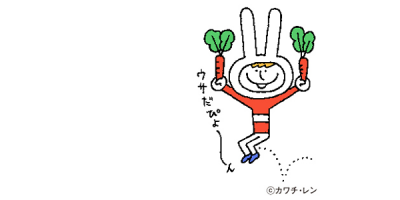How to go about convincing others (not only laypeople, but researchers and colleagues from various academic backgrounds) to accept this new idea that “it is necessary to include the concept of character in communication and language research”?

As I said previously, I believe that the best method is to make use of various real examples in order to bring others, by hook or by crook, to an intuitive “understanding” of the necessity of the concept of character, and this is exactly what I have been doing in this series.
Of course, my ideas are only that —my ideas. But in fact experiments showing that the concept of character is necessary on a “scientific” basis have actually begun. For example, in a paper jointly authored by MOKHTARI Akiko & CAMPBELL Nick, “Speaking Style Variation and Speaker Personality” (in OKADA Hiroki, SADANOBU Toshiyuki (2010 Eds.) ‘The Potential of Cultural Literacy,’ Hitsuzi Shobo), the authors describe how they recorded a single speaker, who used 30 tones of voice, speaking with various people in-person and on the phone. They then used these recordings in an experiment. A report of their experiment, as simply summarized by me, is as follows.
The people selected as test subjects, i.e. the listeners, were unacquainted with the speaker of the recordings. The test subjects were instructed to listen to 30 voices. They were asked to listen to each voice carefully, and divide them into groups by speaker. Of course, all 30 voices were produced by one person, so one would expect they would not be able to distinguish them, but incredibly, the subjects were able to sort all the voices into multiple groups. The subjects were further asked to fill out a questionnaire regarding what kind of people they thought had produced the voices in each group. The subjects responded by assigning various ages and appearances to the speakers in each group. At the end of the experiment, the subjects were flabbergasted to learn that all the voices had been produced by a single person.
In conclusion, the authors observed that “the amount of variation in manner of speaking, depending on who the speaker was speaking to, far exceeded the expectations of the test subjects.” Stated another way, while the test subjects probably recognized that a speaker might change his/her style of speaking depending on the other party, their estimates of the amount of variation were far lower than actual variation. Why did the subjects, or rather why do we all, unrealistically underestimate this kind of thing so much?
I think it is because we “good citizens” live in a world of commitments, and are conditioned to accept certain kinds of ideas. When I see you and speak to you, I believe that you behave precisely like the kind of person you are, and that you will be that kind of person anytime, anywhere. I do not think to myself, you seem thus and so now, but I don’t know what you’re like when I’m not around. I want you to believe that I am precisely the kind of person I seem to be also. This does not just apply to you and me. I assume that all people (or at least all my acquaintances) accept the idea that each person behaves and speaks in a “straightforward” manner, just as their personality dictates. It is not that we categorically deny the existence of shady characters that, although they aren’t supposed to change, actually can, and often do change. It is just that we live our lives without even thinking about this (this is what it means to live a social life) and thus we can maintain our unrealistic estimates without a second thought.
When answering the phone, Japanese women (homemakers especially) use a voice that is completely different from their normal voice. They give their voice an inordinately high, cheerful tone, and begin by saying Hai moshi moshi, XX de gozaimasu (Yes, hello? This is XX speaking). I would bring up this change of voice in order to make my readers realize the necessity of the concept of character, but this is not a rule; in reality, there are also women, albeit lesser in number, who give their voice an inordinately low (calm) tone when answering the phone. Thus, today I introduced a “scientific” approach to characters, while making a profit by using my cherished fellow researchers’ abilities.






